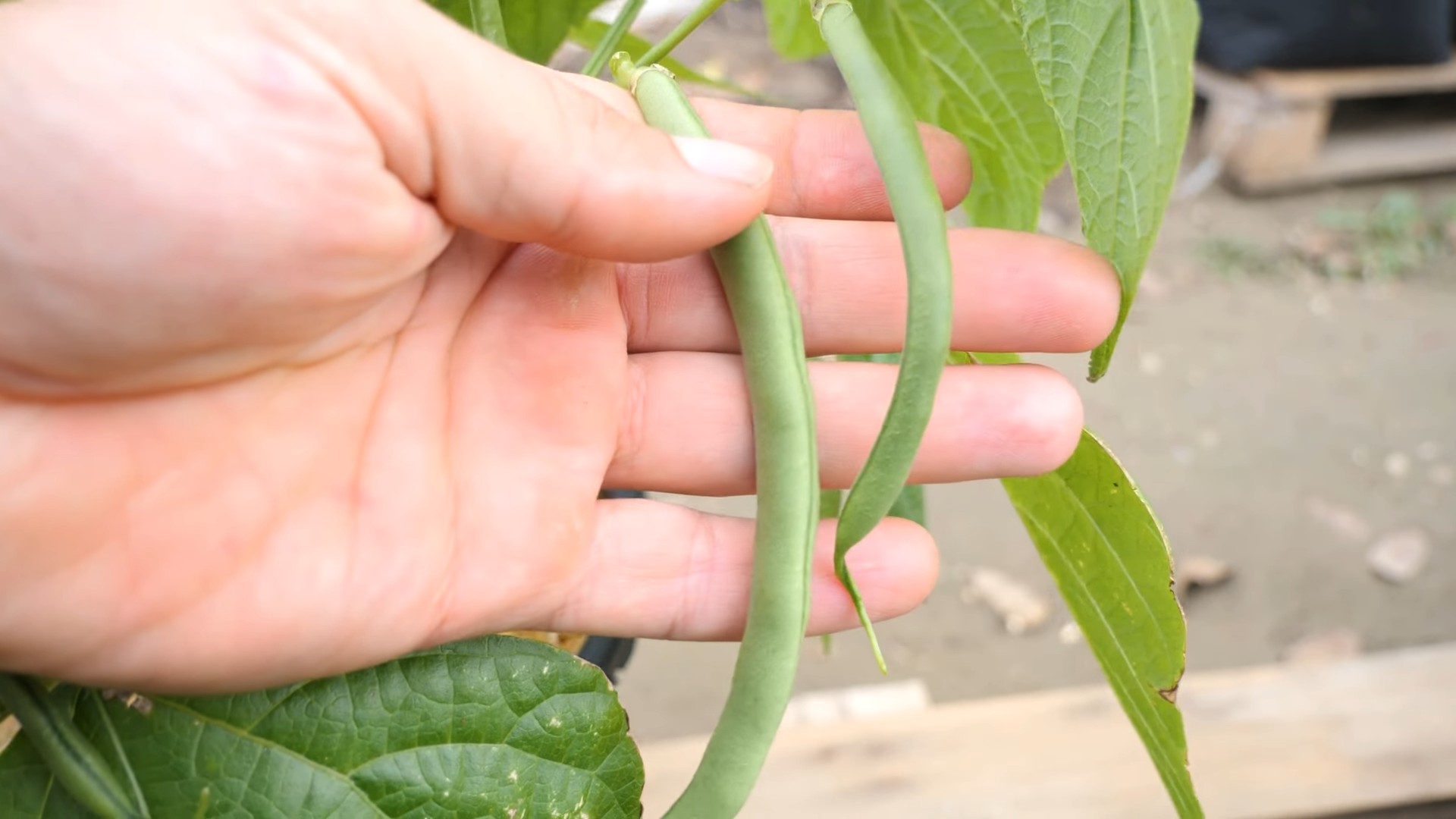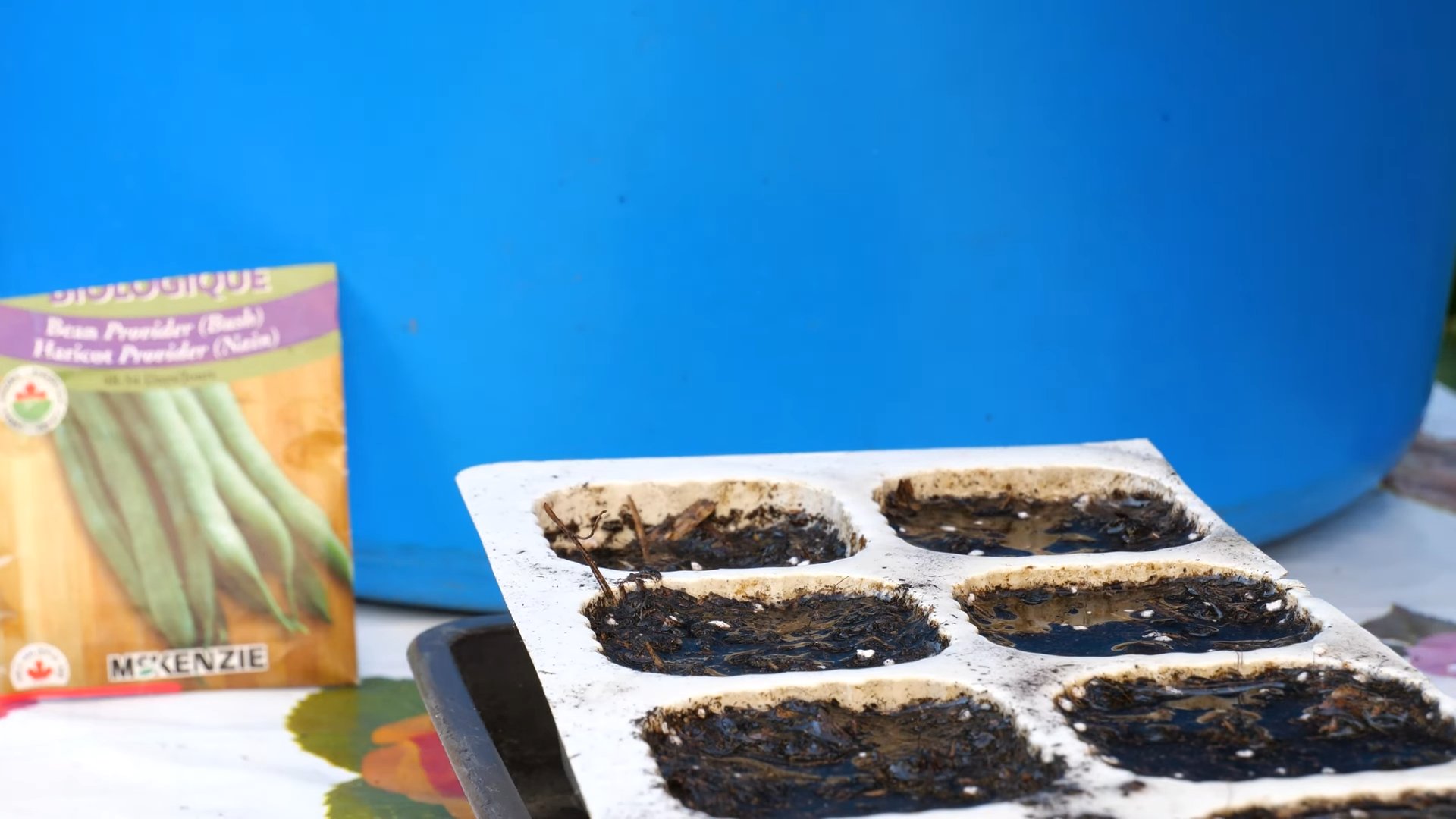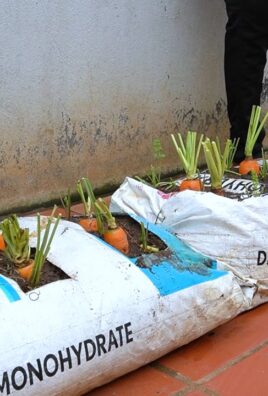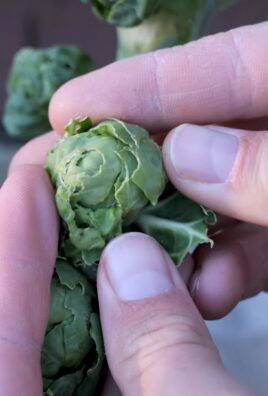Growing green beans for beginners can seem daunting, but trust me, it’s one of the most rewarding experiences a home gardener can have! Imagine stepping outside your back door and harvesting crisp, delicious green beans for dinner – fresh, flavorful, and knowing exactly where they came from. That’s the magic of home gardening!
For centuries, cultures around the globe have cultivated beans, not just for their nutritional value but also for their ability to enrich the soil. From ancient civilizations in the Americas to traditional gardens in Europe and Asia, beans have been a staple crop, passed down through generations. This rich history reminds us that growing green beans for beginners connects us to a long line of gardeners who have nurtured the earth and enjoyed its bounty.
In today’s busy world, many of us crave a connection to nature and a way to provide healthy food for our families. Store-bought produce, while convenient, often lacks the flavor and freshness of homegrown vegetables. Plus, let’s be honest, who wants to pay exorbitant prices for something you can easily grow yourself? That’s where these DIY tricks and hacks come in. I’m going to share some simple, effective methods to help you successfully grow your own green beans, even if you’ve never planted a seed before. Get ready to transform your backyard into a thriving green bean haven!

Growing Green Beans: A Beginner’s Guide to a Bountiful Harvest
Okay, so you want to grow green beans? Awesome! It’s a fantastic choice for beginner gardeners. Green beans are relatively easy to grow, produce a lot of food, and taste amazing fresh from the garden. I’m going to walk you through everything you need to know to get started, from choosing the right variety to harvesting your delicious beans. Let’s get our hands dirty!
Choosing Your Green Bean Variety
First things first, you need to decide what kind of green bean you want to grow. There are two main types: bush beans and pole beans.
* **Bush Beans:** These are compact and don’t need support. They’re great for smaller gardens or containers. They produce most of their beans at once, making them ideal for canning or freezing. Popular varieties include ‘Blue Lake Bush’, ‘Contender’, and ‘Provider’.
* **Pole Beans:** These beans need a trellis or other support to climb. They produce beans over a longer period, so you’ll have a steady supply throughout the season. They tend to be more productive overall. Popular varieties include ‘Kentucky Wonder’, ‘Blue Lake Pole’, and ‘Scarlet Runner’. (Scarlet Runner beans are also beautiful with their red flowers!)
I personally love pole beans because they look so cool climbing up a trellis, and I enjoy having a continuous harvest. But if you’re short on space, bush beans are the way to go.
Preparing Your Garden Bed
Green beans need well-drained soil and plenty of sunlight (at least 6-8 hours a day). Here’s how to get your garden bed ready:
* **Choose a Sunny Spot:** Find a location in your yard that gets lots of sunshine.
* **Test Your Soil:** It’s always a good idea to test your soil’s pH. Green beans prefer a pH between 6.0 and 7.0. You can buy a soil testing kit at most garden centers. If your soil is too acidic, you can add lime to raise the pH.
* **Amend the Soil:** Green beans aren’t heavy feeders, but they do appreciate well-amended soil. Add compost or well-rotted manure to your garden bed to improve drainage and fertility. I usually add a few inches of compost and mix it in well with a garden fork.
* **Clear the Area:** Remove any weeds, rocks, or debris from the planting area. You want a nice, clean bed for your beans to grow in.
Planting Your Green Beans
Now for the fun part – planting!
1. **Check the Last Frost Date:** Green beans are sensitive to frost, so you need to wait until after the last frost in your area to plant them. You can find the average last frost date for your region online or by contacting your local extension office.
2. **Direct Sow the Seeds:** Green beans are best direct sown, meaning you plant the seeds directly into the garden. They don’t transplant well.
3. **Planting Bush Beans:**
* Sow seeds 1 inch deep and 2-3 inches apart in rows.
* Space rows 18-24 inches apart.
* Gently cover the seeds with soil and water thoroughly.
4. **Planting Pole Beans:**
* Set up your trellis or support system before planting. This could be a teepee, a fence, or a simple trellis made of bamboo stakes and twine.
* Sow seeds 1 inch deep and 4-6 inches apart at the base of the trellis.
* Gently cover the seeds with soil and water thoroughly.
5. **Water Regularly:** Keep the soil consistently moist, but not waterlogged, until the seeds germinate. Germination usually takes 5-10 days, depending on the soil temperature.
Caring for Your Green Beans
Once your green beans have sprouted, here’s how to keep them happy and healthy:
1. **Watering:** Water deeply and regularly, especially during dry spells. Aim to water at the base of the plants to avoid wetting the foliage, which can lead to fungal diseases. I like to water in the morning so the leaves have time to dry out during the day.
2. **Weeding:** Keep the garden bed free of weeds, which can compete with your green beans for nutrients and water. Hand-pull weeds carefully to avoid disturbing the bean plants’ roots.
3. **Fertilizing:** Green beans don’t need a lot of fertilizer, but you can give them a boost with a side dressing of compost or a balanced organic fertilizer a few weeks after they emerge. Follow the instructions on the fertilizer package.
4. **Supporting Pole Beans:** As your pole beans grow, gently guide them onto the trellis or support system. They’ll eventually start climbing on their own.
5. **Pest Control:** Keep an eye out for common green bean pests like aphids, bean beetles, and slugs.
* **Aphids:** These tiny insects suck sap from plants. You can control them with a strong spray of water or by introducing beneficial insects like ladybugs.
* **Bean Beetles:** These beetles can defoliate your bean plants. Handpick them off the plants or use an insecticidal soap.
* **Slugs:** These slimy creatures can damage young seedlings. You can trap them with beer traps or use diatomaceous earth around the plants.
6. **Disease Prevention:** Green beans can be susceptible to fungal diseases like powdery mildew and bean rust.
* **Powdery Mildew:** This disease appears as a white, powdery coating on the leaves. Improve air circulation by spacing plants properly and avoid overhead watering. You can also treat it with a fungicide.
* **Bean Rust:** This disease causes reddish-brown spots on the leaves. Remove infected leaves and improve air circulation. You can also treat it with a fungicide.
Harvesting Your Green Beans
The best part! You can usually start harvesting green beans about 50-60 days after planting, depending on the variety.
1. **Harvest Regularly:** Pick the beans when they are young and tender, before the seeds inside become too large. Regular harvesting encourages the plants to produce more beans.
2. **Check Bean Size:** The ideal size for harvesting depends on the variety, but generally, you want the beans to be about the thickness of a pencil.
3. **Snap Them Off:** Gently snap the beans off the plant, being careful not to damage the stems.
4. **Enjoy Your Harvest:** Fresh green beans are delicious steamed, sautéed, or eaten raw in salads. You can also can or freeze them for later use.
Troubleshooting Common Problems
Even with the best care, you might encounter some problems along the way. Here are a few common issues and how to address them:
* **Poor Germination:** If your seeds don’t germinate, it could be due to several factors:
* **Cold Soil:** Green beans need warm soil to germinate. Wait until the soil temperature is at least 60°F (16°C) before planting.
* **Poor Quality Seeds:** Use fresh, high-quality seeds.
* **Overwatering:** Overwatering can cause the seeds to rot. Make sure the soil is well-drained.
* **Pests:** Birds or rodents might be eating the seeds. Protect the planting area with netting.
* **Yellowing Leaves:** Yellowing leaves can indicate a nutrient deficiency or a disease.
* **Nutrient Deficiency:** Test your soil and amend it with the appropriate nutrients.
* **Disease:** Check for signs of fungal diseases and treat accordingly.
* **Lack of Bean Production:** If your plants are growing well but not producing beans, it could be due to:
* **Lack of Pollination:** While green beans are self-pollinating, sometimes they need a little help. Gently shake the plants to help distribute pollen.
* **High Temperatures:** Extreme heat can inhibit bean production. Provide shade during the hottest part of the day.
* **Over-Fertilizing:** Too much nitrogen can promote leafy growth at the expense of bean production. Use a balanced fertilizer.
Extending Your Green Bean Harvest
Want to keep those beans coming? Here are a few tips for extending your harvest:
* **Succession Planting:** Plant a new batch of green beans every 2-3 weeks to ensure a continuous harvest throughout the season.
* **Choose Heat-Tolerant Varieties:** Some varieties are more tolerant of hot weather than others. Look for varieties that are specifically bred for warm climates.
* **Provide Shade:** During the hottest part of the day, provide shade for your green bean plants with shade cloth or by planting them near taller plants.
* **Water Deeply:** Deep watering encourages strong root growth, which can help the plants withstand stress.
Growing green beans is a rewarding experience, and with a little care and attention, you can enjoy a bountiful harvest of fresh, delicious beans all season long. Happy gardening!

Conclusion
So, there you have it! Growing green beans, even for absolute beginners, is not only achievable but also incredibly rewarding. We’ve walked through the entire process, from selecting the right variety and preparing your soil to planting, nurturing, and finally, harvesting those crisp, delicious beans. The beauty of this DIY gardening project lies in its simplicity and the tangible connection it fosters with nature. Forget those bland, store-bought green beans; imagine the satisfaction of serving a dish made with vegetables you nurtured from seed to table.
Why is this a must-try? Because growing your own green beans offers a multitude of benefits. You control the entire process, ensuring your beans are free from harmful pesticides and herbicides. You get to enjoy the freshest possible flavor, bursting with natural sweetness. And, perhaps most importantly, you experience the joy and therapeutic benefits of gardening. It’s a chance to slow down, connect with the earth, and witness the miracle of life unfolding before your eyes. Plus, fresh green beans are a fantastic addition to any healthy diet!
But don’t stop there! Experiment with different varieties of green beans. Try bush beans for a compact garden or pole beans for vertical growing. Consider adding companion plants like marigolds or nasturtiums to deter pests and attract beneficial insects. You can even try succession planting, sowing new seeds every few weeks, to ensure a continuous harvest throughout the growing season. For a unique twist, try pickling your excess green beans for a tangy and delicious treat that will last through the winter. Or, blanch and freeze them to enjoy the taste of summer all year round.
Growing green beans is more than just a gardening project; it’s an investment in your health, your well-being, and your connection to the natural world. It’s a chance to learn new skills, enjoy fresh, delicious food, and experience the satisfaction of creating something beautiful and nourishing with your own two hands.
We wholeheartedly encourage you to give this DIY trick a try. Don’t be intimidated by the prospect of gardening; remember, even the most experienced gardeners started somewhere. Start small, be patient, and don’t be afraid to experiment. And most importantly, have fun!
Once you’ve harvested your first crop of homegrown green beans, we’d love to hear about your experience. Share your tips, tricks, and triumphs in the comments below. Let us know what varieties you tried, what challenges you faced, and what you learned along the way. Your insights could inspire other beginners to embark on their own green bean growing adventures. So, grab your seeds, get your hands dirty, and get ready to enjoy the delicious rewards of growing your own green beans!
Frequently Asked Questions (FAQ)
Q: How much sun do green beans really need?
A: Green beans thrive in full sun, which means they need at least 6-8 hours of direct sunlight per day. While they can tolerate a little shade, especially in the hottest part of the afternoon, insufficient sunlight will result in leggy plants with reduced yields. If you’re growing green beans indoors, consider using grow lights to supplement natural sunlight.
Q: What’s the best type of soil for growing green beans?
A: Green beans prefer well-drained, fertile soil with a slightly acidic to neutral pH (around 6.0 to 7.0). Amend your soil with compost or other organic matter to improve drainage and fertility. Avoid heavy clay soils, as they can become waterlogged and hinder root growth. A soil test can help you determine the pH and nutrient levels of your soil and guide you in making necessary amendments.
Q: How often should I water my green bean plants?
A: Green beans need consistent moisture, especially during flowering and pod development. Water deeply and regularly, aiming to keep the soil consistently moist but not waterlogged. A good rule of thumb is to water when the top inch of soil feels dry to the touch. Avoid overhead watering, as it can promote fungal diseases. Instead, water at the base of the plants using a soaker hose or drip irrigation system. Mulching around the plants can also help retain moisture and suppress weeds.
Q: When is the right time to harvest my green beans?
A: Green beans are typically ready to harvest about 50-60 days after planting, depending on the variety. The pods should be firm, crisp, and snap easily when bent. Avoid letting the pods become too large or tough, as they will lose their flavor and tenderness. Harvest regularly to encourage continued production.
Q: What are some common pests and diseases that affect green beans, and how can I prevent them?
A: Common pests that affect green beans include aphids, bean beetles, and spider mites. Diseases include powdery mildew, bean rust, and anthracnose. To prevent these problems, practice good garden hygiene, such as removing plant debris and weeds. Use insecticidal soap or neem oil to control pests. Ensure good air circulation to prevent fungal diseases. Choose disease-resistant varieties whenever possible. Crop rotation can also help prevent the buildup of soilborne diseases.
Q: Can I grow green beans in containers?
A: Yes, you can definitely grow green beans in containers! Choose bush bean varieties, as they are more compact and well-suited for container gardening. Use a large container (at least 12 inches in diameter) with drainage holes. Fill the container with a high-quality potting mix. Provide adequate sunlight and water regularly. You may also need to fertilize your container-grown green beans more frequently than those grown in the ground.
Q: What’s the difference between bush beans and pole beans?
A: Bush beans are compact and self-supporting, growing to a height of about 2 feet. They are a good choice for small gardens or containers. Pole beans, on the other hand, are vining plants that require a trellis or other support to climb. They can grow to a height of 6-8 feet or more. Pole beans typically produce a larger yield over a longer period than bush beans.
Q: How can I improve the yield of my green bean plants?
A: To improve the yield of your green bean plants, ensure they receive adequate sunlight, water, and nutrients. Amend your soil with compost or other organic matter to improve fertility. Fertilize regularly with a balanced fertilizer. Harvest regularly to encourage continued production. Consider succession planting to extend your harvest season. And, of course, choose high-yielding varieties.
Q: Can I save seeds from my green bean plants for next year?
A: Yes, you can save seeds from your green bean plants, but only if you are growing heirloom or open-pollinated varieties. Hybrid varieties will not produce true-to-type seeds. To save seeds, allow some of the pods to dry completely on the plant. Once the pods are dry and brittle, shell the seeds and store them in a cool, dry place.
Q: My green bean plants are flowering, but not producing any beans. What could be the problem?
A: There are several reasons why your green bean plants might be flowering but not producing beans. Insufficient pollination, high temperatures, and lack of water can all contribute to this problem. Ensure your plants are receiving adequate water and sunlight. You can also try hand-pollinating the flowers by gently shaking the plants or using a small brush to transfer pollen from one flower to another. If temperatures are consistently above 90 degrees Fahrenheit, the flowers may not set fruit.




Leave a Comment